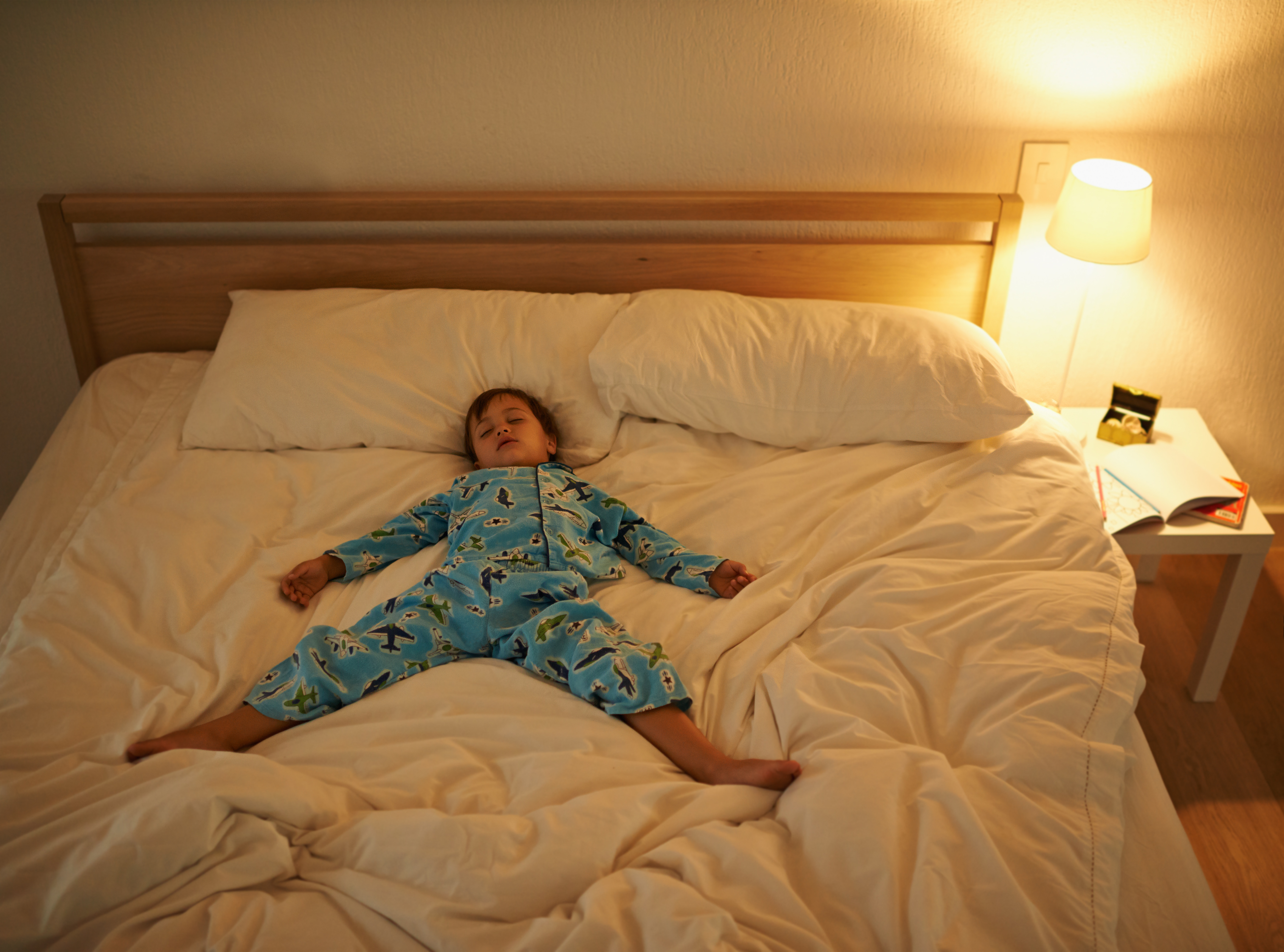 Getting adequate and restorative sleep can prove elusive for parents, especially those who are struggling with frequent nighttime awakenings, interruptions, and guests in their bedrooms. For many children, sleeping in a parent’s room can be a privilege or safe haven after a nightmare, and these occasional sleepovers are not usually problematic for anyone involved . However, some kids have difficulty falling asleep or staying asleep without a parent present due to established habits or fears. In these families, parents often feel at a loss for how to regain some of their personal space or privacy, and as children grow they sometimes miss out on activities such as sleepovers with friends or camp. Neither the parents or children in these situations are getting the best sleep possible and parents often feel guilty or selfish if they insist the child sleeps in his/her own room. If you are looking for a way to help foster your child’s independence and help them sleep in their own bed, read on for some ideas you can implement at home.
Getting adequate and restorative sleep can prove elusive for parents, especially those who are struggling with frequent nighttime awakenings, interruptions, and guests in their bedrooms. For many children, sleeping in a parent’s room can be a privilege or safe haven after a nightmare, and these occasional sleepovers are not usually problematic for anyone involved . However, some kids have difficulty falling asleep or staying asleep without a parent present due to established habits or fears. In these families, parents often feel at a loss for how to regain some of their personal space or privacy, and as children grow they sometimes miss out on activities such as sleepovers with friends or camp. Neither the parents or children in these situations are getting the best sleep possible and parents often feel guilty or selfish if they insist the child sleeps in his/her own room. If you are looking for a way to help foster your child’s independence and help them sleep in their own bed, read on for some ideas you can implement at home.
Establish a Good Bedtime Routine
As you may already know, establishing a consistent bedtime routine is often a crucial step to getting everyone to bed in a calm and timely manner. Make sure your child is getting plenty of activity during the day to promote sleepiness at night, and ensure that bedtime is consistent. Families often have success giving a child his/her bath (if needed) before bedtime. The “bath before bed” trick (which works for adults too) simulates the body’s natural drop in temperature as we fall asleep and helps the child start to feel tired. After bath time, you and your child should engage in age appropriate calming activities such as cuddling, coloring, or reading. Electronic use before bed is not recommended for children (or adults) since excess stimulation (e.g., exciting games or videos) is often involved. When it is time to go to sleep, parents can give hugs/kisses goodnight and leave the room.
If you aren’t already, it is important to start and end the bedtime routine in your child’s room instead of your own. It is much easier for a parent to gradually “fade” out of the child’s room than it is for a child to leave or be carried from a parent’s room or the living room.
Try Check-Ins
For a number of children, the idea of falling asleep alone in a dark room is really scary, and they become upset with their caregiver leaves their side. One compromise which can alleviate this source of anxiety for kids is for parents to promise to check in until the child is asleep. The amount of time between check-ins can be gradually increased over the course of several weeks. To use check-ins, you should tell your child goodnight while he/she is still awake but drowsy. Rocking, holding, or rubbing your child until he/she is already asleep can have unintended consequences as your child will not learn how to fall asleep without you there to help, especially in the middle of the night! Tell your child you will come check on him or her every ___ minutes until he/she falls asleep. You can set a reminder for every two minutes for young children and longer time periods (e.g., five or ten minutes), for older children or for kids who have started to feel comfortable with a check-in routine and have mastered shorter time spans. Continue to briefly check on your child at the end of every time period as promised. Eventually you will go to check-in on your child and find him/ her already asleep! As your child becomes used to this routine, increase the amount of time between check-ins, so that in the near future you will only need to tuck him or her in and say goodnight!
For kids who have a difficult time staying in their own bed to fall asleep, there are several other proven behavioral strategies parents can implement to encourage their child to fall asleep independently. If this method did not feel like the right fit for you and your family, be sure to talk with a child therapist, pediatrician, or sleep specialist for other ideas, and to rule out sleep and anxiety disorders.
Use Rewards or a “Bedtime Pass”
Once your child has mastered falling asleep on his or her own, the next step is to get them to stay in their bed throughout the night. Nighttime awakenings are natural as we move through sleep cycles, but kids who are not accustomed to falling asleep on their own often join their parents in the middle of the night when they have woken. Parents can help children set goals to sleep in their own beds. For example, some parents find a lot of success for kids of all ages using a bedtime pass. Each night, parents give their child a pass (e.g., an index card) which the child can use for one excused trip from their bedroom at night, which he or she can use to go to the bathroom, recount a scary dream, or any other reason he or she might see fit. However, the child only gets one pass each night. With this method, kids are comforted knowing they have an option to leave the room if they need to, while parents are relieved to reduce numerous departures from the room to just one.
With older children, sometimes attaching a reward/privilege to staying in bed through the night can provide the encouragement and motivation the child needs to succeed. To use this method, it is helpful to make a simple “Slept in my own bed” chart or tracker. Work with your child to determine a reward or design a menu of options (e.g., trip to the park, choosing dinner, no chores pass, movie night, having dessert, etc.) for meeting their weekly goal of sleeping in their bed. Use a sticker or smiley to mark each night the child successfully stayed in his or her room, then at the end of the week, if he or she met the goal (start with 4 or 5 nights of the week) make sure to provide the reward! Make sure to pair your child’s efforts with lots of praise each day, as well as encouragement (particularly after rough nights)!
I hope these strategies will help you and your family obtain better sleep over the coming weeks. Best of luck and sweet dreams!
Take care,
Dr. Grinnell
